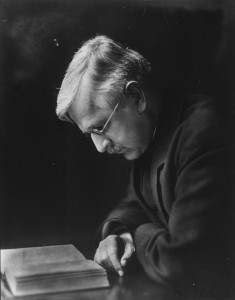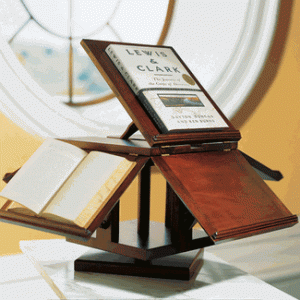
This image of a reader is familiar to us all. The depiction is one of an individual solitary act that is immersive and serious. The material object being read is a book and we may even assume it is a literary work. It is easy to assume that this is READING. The current claim about a reading crisis or the death of the book implies that reading is changing as we know it as a result of new technologies. The assumption implicit in this “reading crisis” is that reading has a long tradition and that it is consistent. Yet a variety of reading habits have long existed.
In an article “The Remaking of Reading, digital humanities scholar Matthew Kirshenbaum highlights the fact that there are numerous types of reading even within a field such as literature. We do not read a poem in the same way we read a novel like War and Peace. Libraries have long provided resources such as concordances, indexes, and compendiums to allow readers to encounter texts in a non-linear fashion and to do things that are not quite long-form or short-form reading.
Currently in library literature and elsewhere there is a lament about how new reading devices such as the Nook or Kindle disrupt our notion of reading. Yet, just as there is not one type of reading, there is not one type of format for text. In a recent NY Times article called “From Scroll to Screen,” author Lev Grossman makes the case that the change we are witnessing now – the emergence of the book in digital form- has an important precedent; the move from scroll to the codex. Grossman’s point is that we think of the codex as a continuous reading device, when in fact it’s emergence following the scroll gave readers the first opportunity to jump to any point within the text instantly and nonlinearly. He writes “you could flip back and forth between two pages and even study them both at once. You could cross-check passages and compare them and bookmark them.”
A scroll was the ultimate example of a reading technology that forced the reader to read continuously and linearly. His argument is that, contrary to common belief, the codex is a reading technology that encourages skipping around in a text. Therefore, these e-readers may not be as disruptive as we tend to think given the full history of changes to reading technologies.

Additionally, to push on another assumption about e-readers – there is also a history of reading devices that enabled readers to split their attention among many texts at once. Thomas Jefferson designed a “lazy susan” to enable the reading and cross-referencing of multiple books at once. You can also find images of medieval scholars hard at work among devices that held open multiple books at a time. Thus, multi-tasking is not new, especially in the realm of reading.
So, rather than focusing on how new reading technologies pose a threat to reading, and by extension, to libraries where the discovery, use, and reading of books has traditionally taken place, it is more productive to focus on what libraries can now do with these new technologies to help support user expectations and behaviors.
We are all familiar with the concept of close reading. It is the fundamental approach to reading humanities texts. In the process you closely observe facts and details about the text. The issue with close reading is that it depends on a very small body or cannon of works. Now with access to millions of digitized texts in Google book, the Ngram Viewer, and Hathitrust, we are able to engage in what Stanford digital humanities scholar Franco Moretti calls “distant reading” or “not-reading.” This process is one in which an automated search is performed across a large corpus of digital texts in search of patterns. This distant or distance reading encompasses a whole host of new methods for interrogating texts that can help us better answer central humanist questions.
This suggests that libraries need to continue to support close reading by creating well-lit, quiet spaces for immersive reading. However, libraries also need to plan for and create spaces that enable distant reading. These spaces, while they don’t need to be fully equipped Digital Humanities Centers or Labs, do need to provide users with the tools and support for new approaches to scholarship and research. These new methodological approaches provide libraries with an opportunity to expand support for users to meet their expectations and to push beyond those expectations. Helping students and faculty imagine new possibilities for their research is one of the most important contributions the library can make to scholarship in the coming decade.